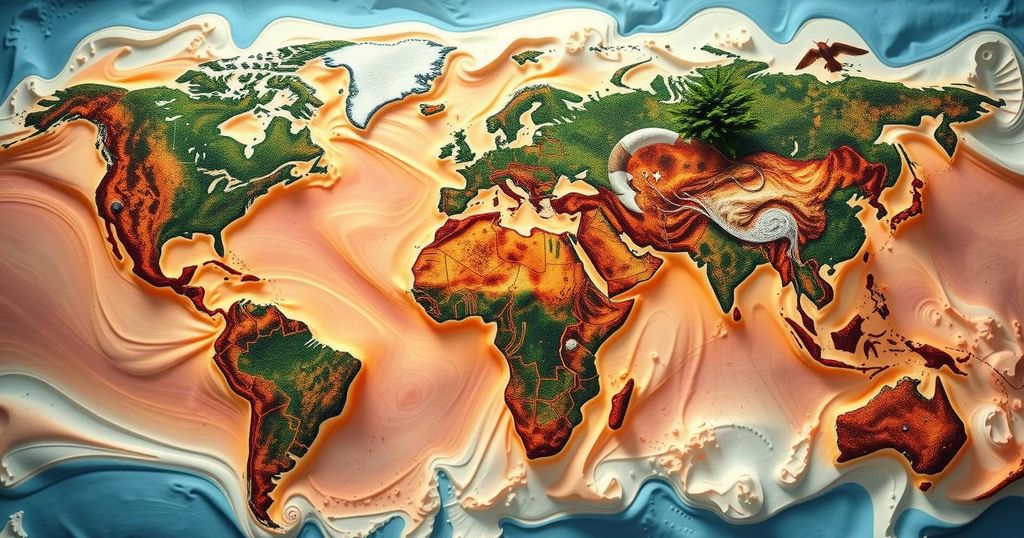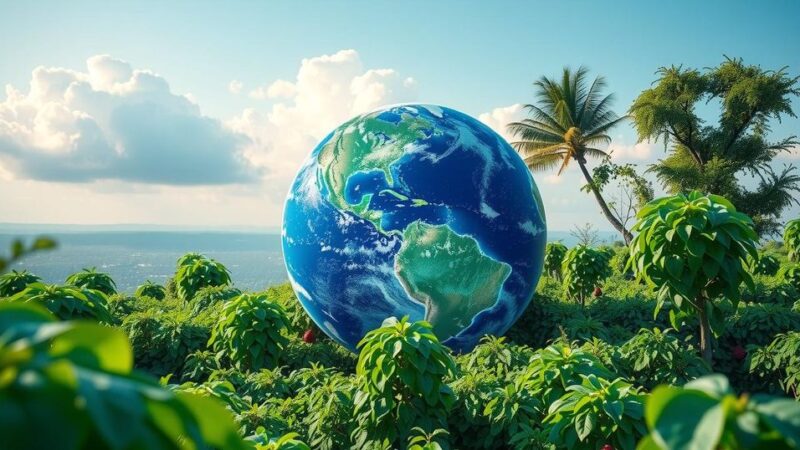A study reveals that climate change may threaten the extinction of nearly a third of all species, with projections indicating that 7.6% are already at risk. Increased temperatures correlate with rising extinction rates, particularly affecting amphibians and species from sensitive ecosystems. Maintaining the Paris Agreement’s 1.5°C limit is crucial for reducing these risks and preserving biodiversity.
Global climate change poses a significant threat to biodiversity, with current projections indicating that approximately 7.6% of species are at risk of extinction due to climate-related factors. A recent study published in the journal Science led by biologist Mark C. Urban from the University of Connecticut analyzed the historical data of extinctions and found a troubling correlation with rising global temperatures. Since the mid-20th century, 19 species have been driven to extinction, at least partially attributed to climate change. Furthermore, the study reveals that the rate of species loss related to climate factors has increased by 4% each decade.
As global temperatures continue to rise, particularly if they exceed the critical threshold of 1.5°C above pre-industrial levels, the risk of extinction will escalate dramatically. Under the most extreme emissions scenarios, it is estimated that nearly one-third of all species could face extinction. Amphibians, along with species from vulnerable ecosystems such as mountains, islands, and freshwater regions, are expected to experience the greatest threats, especially in biodiverse regions like South America, Australia, and New Zealand.
Currently, with temperatures at 1.3°C above the pre-industrial average, it is projected that approximately 1.6% of species are at risk of extinction. Should we reach the 1.5°C threshold established by the Paris Agreement, this figure could rise to 1.8%, and at 2.0°C, it may increase to 2.7%. The worst-case scenario, with temperatures approaching 5.4°C, could lead to an appalling 29.7% of species facing extinction. While existing emissions policies may reduce the extinction risk from 30% to 5%, losing even 5% of species could severely disrupt ecosystems and biodiversity, impacting human populations that depend on them.
This study underscores the urgency of limiting greenhouse gas emissions to stay below the 1.5°C threshold, thereby reducing extinction risks to under 2%. Moreover, it stresses the importance of identifying priority species for conservation as we work to mitigate the effects of anthropogenic climate change. Immediate action is essential to preserve biodiversity before it is irreparably harmed.
The ongoing climate crisis is not merely an environmental issue but a pivotal factor threatening global biodiversity. As temperatures rise, the vulnerability of species to extinction intensifies, particularly in ecosystems already under pressure from human activity. The study discussed in this article emphasizes the direct link between increasing global temperatures and the extinction risks faced by various species, particularly in regions that are ecologically fragile. Understanding these dynamics is crucial for formulating effective conservation strategies and climate policies.
In summary, climate change represents an imminent threat to global biodiversity, with projections suggesting that nearly one-third of species could face extinction if warming continues unabated. The findings from the recent study highlight the importance of adhering to the 1.5°C limit established by international agreements. By reducing greenhouse gas emissions and prioritizing conservation efforts for at-risk species, we can enhance the resilience of ecosystems and mitigate the catastrophic impacts of climate change on biodiversity.
Original Source: www.energylivenews.com






